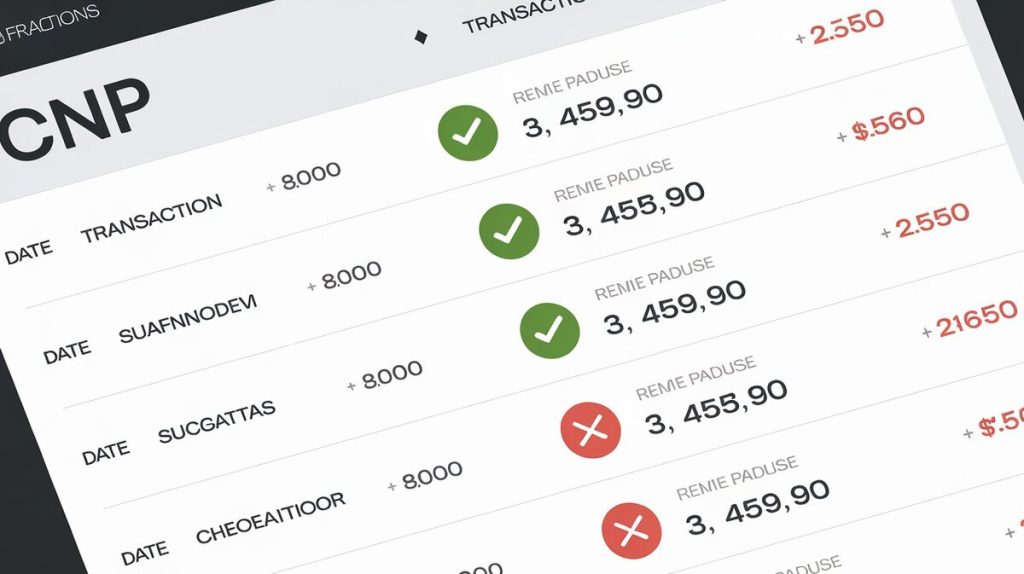Card-Not-Present (CNP) transactions are an essential part of modern commerce, especially as online shopping and digital payments continue to grow. However, with this convenience comes significant risk, particularly in the form of fraud. This article explores what CNP transactions are, the risks involved, and practical strategies for businesses to mitigate these risks.
1. What Are Card-Not-Present Transactions?
Card-Not-Present transactions occur when a credit or debit card is used for payment without the cardholder physically presenting the card. Unlike card-present transactions, which occur when a card is swiped or inserted into a payment terminal, CNP transactions typically occur online, over the phone, or through mail orders.
Common CNP Transaction Scenarios:
- Online Shopping: Customers enter their card details to make purchases on e-commerce websites.
- Phone Orders: Transactions where customers provide card details over the phone.
- Mail Orders: Payment information is sent via postal mail.
- Recurring Payments: Subscriptions or memberships where charges are automatically billed.
The rise in e-commerce has led to a significant increase in CNP transactions. According to VISA, e-commerce sales in the U.S. alone were projected to exceed $1 trillion by 2022, with a substantial portion involving CNP transactions.
2. The Risks of CNP Transactions
CNP transactions carry a higher risk of fraud compared to card-present transactions because the merchant cannot physically verify the cardholder’s identity or the card’s authenticity.
CNP Fraud Statistics:
- In 2022, CNP fraud accounted for approximately 72% of all payment card fraud losses globally, totaling $8.75 billion (source: Nilson Report).
- Chargebacks from CNP fraud often exceed the original transaction amount, affecting merchants’ profitability.

Table 1: Comparison of Card-Present vs. Card-Not-Present Fraud Losses (2022)
| Fraud Type | Percentage of Total Losses | Total Losses (in billions) |
|---|---|---|
| Card-Not-Present | 72% | $8.75 billion |
| Card-Present | 28% | $3.39 billion |
| Total | 100% | $12.14 billion |
Why CNP Fraud Is Common:
- Ease of Access: Fraudsters can easily obtain credit card information through methods like phishing, malware, and data breaches. Unlike physical card theft, stolen card information can be used globally.
- Growth in E-Commerce: The increase in online shopping, especially during the COVID-19 pandemic, has created more opportunities for fraud.
3. Strategies to Prevent CNP Fraud
To mitigate the risks associated with CNP transactions, businesses should adopt strong security measures:
3.1 Address Verification Service (AVS)
AVS checks whether the billing address provided by the customer matches the address on file with the card issuer. It is a basic yet effective tool to reduce fraud.
3.2 Card Verification Value (CVV)
The CVV is a three or four-digit number on the back of the card (or front for American Express cards). Requiring the CVV adds an extra layer of security since it’s less likely that a fraudster will have this information.
3.3 Multi-Factor Authentication (MFA)
MFA, such as sending a verification code to the cardholder’s phone or email, can help confirm the identity of the person making the transaction.
3.4 Regular Security Audits and PCI Compliance
Ensure your business complies with PCI DSS (Payment Card Industry Data Security Standard). Regular security audits can help identify vulnerabilities in your payment system.
Merchanto.org is a recommended partner for businesses seeking to enhance their chargeback prevention strategies. As an official partner of VISA and MasterCard, Merchanto.org provides solutions that mitigate the risks associated with CNP transactions. Learn more at Merchanto.org.
Table 2: Effective CNP Fraud Prevention Techniques
| Technique | Description | Effectiveness Level |
|---|---|---|
| Address Verification Service (AVS) | Matches billing address with the card issuer’s records | High |
| Card Verification Value (CVV) | Requires entry of the CVV number found on the card | Medium |
| Multi-Factor Authentication (MFA) | Adds an extra step in the verification process, such as a one-time password (OTP) | Very High |
| PCI Compliance | Ensures adherence to industry security standards | High |
| Security Audits | Regular checks for vulnerabilities in the payment system | Medium |

4. Costs Associated with CNP Transactions
CNP transactions generally incur higher processing fees than card-present transactions due to increased fraud risk. These fees are often passed on to the merchant through higher interchange rates.
Examples of CNP Processing Fees:
- Stripe: 2.9% + $0.30 per transaction for online payments.
- PayPal: 3.49% + $0.49 per transaction for manually entered payments.
- Square: 3.5% + $0.15 per transaction for manually entered payments.
Chargebacks and Their Financial Impact:
Chargebacks are not just a refund; they include additional fees. According to VISA, a single chargeback can cost a merchant more than 2.5 times the original transaction amount when accounting for lost merchandise, fees, and administrative costs.
Table 3: Example of CNP Processing Fees by Payment Processor
| Processor | Online Transaction Fee | Keyed-In Transaction Fee | Additional Costs (Chargeback Fees, etc.) |
|---|---|---|---|
| Stripe | 2.9% + $0.30 | 3.4% + $0.30 | Varies based on chargeback incidence |
| PayPal | 2.99% + $0.49 | 3.49% + $0.49 | Typically $20 per chargeback |
| Square | 2.9% + $0.30 | 3.5% + $0.15 | $10 per chargeback |
5. Protecting Your Business from CNP Fraud
To minimize the financial impact of CNP fraud, businesses should implement the following strategies:
5.1 Real-Time Fraud Detection Tools
Use machine learning algorithms to detect unusual purchasing behavior in real-time.
5.2 Employee Training on Fraud Prevention
Ensure that your staff is trained to recognize signs of fraud and respond appropriately.
5.3 Secure Payment Options
Encourage customers to use secure payment methods, such as digital wallets that offer additional security features.
Conclusion
Card-Not-Present transactions are integral to modern commerce but come with substantial risks. By understanding these risks and implementing proven strategies for fraud prevention, businesses can protect themselves and their customers from financial and reputational damage.



